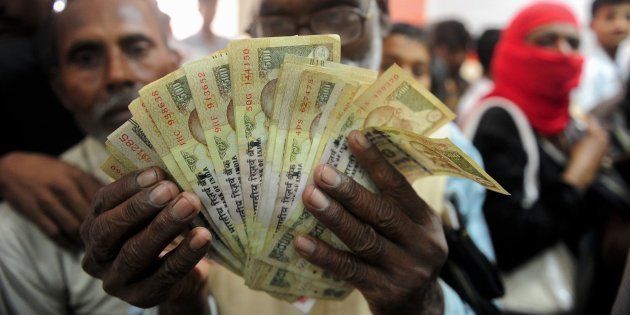
MUMBAI -- As much as 99.3% of the junked Rs 500 and Rs 1,000 notes have returned to the banking system, the RBI said on Wednesday, indicating that just a minuscule percentage of currency was left out of the system after the government's unprecedented note ban aimed at curbing black money and corruption.
The Reserve Bank of India (RBI), that has taken over a year and a half to count the currency that was returned in the limited period window provided by the government to exchange or deposit the demonetised currency, said in its Annual Report for 2017-18 that the exercise is finally over.
Of the Rs 15.41 lakh crore worth Rs 500 and Rs 1,000 notes in circulation on 8 November, 2016, when the note ban was announced, notes worth Rs 15.31 lakh crore have been returned.
This meant just Rs 10,720 crore of the junked currency did not return to the banking system.
After the note ban, old junked notes, called specified bank notes (SBNs), were allowed to be deposited in banks with unusual deposits coming under income tax scrutiny.
The "humungous task of processing and verification of specified bank notes (SBNs) was successfully achieved," it said.
The SBNs received were verified, counted and processed in the sophisticated high speed currency verification and processing system (CVPS) for accuracy and genuineness and then shredded, it added.
RBI said the processing of SBNs has since been completed. "The total SBNs returned from circulation is Rs 15,310.73 billion."
A collateral damage as a result of rise in printing and other cost was dividend RBI pays to the government.
The government replaced old Rs 500 notes with new ones, but no replacement for Rs 1,000 notes have been made. Instead, a new Rs 2,000 notes were introduced post note ban.
Post-demonetisation, RBI spent Rs 7,965 crore in 2016-17 on printing new Rs 500 and Rs 2,000 and other denomination notes, more than double the Rs 3,421 crore spent in the previous year.
In 2017-18 (July 2017 to June 2018), it spent another Rs 4,912 crore on printing of currency, the annual report said.
The demonetisation was hailed as a step that would curb black money, corruption and check counterfeit currency but RBI said, "Counterfeit notes detected in SBNs decreased by 59.7 and 59.6 per cent in the denominations of Rs 500 and Rs 1,000, respectively."
"Compared to the previous year, there was an increase of 35% in counterfeit notes detected in the denomination of Rs 100, while there was a noticeable increase of 154.3 per cent in counterfeit notes detected in the denomination of Rs 50," RBI said adding that counterfeit notes detected in the new Rs 500 and Rs 2,000 notes during 2017-18 were 9,892 and 17,929 as against 199 and 638, respectively, during the previous year.